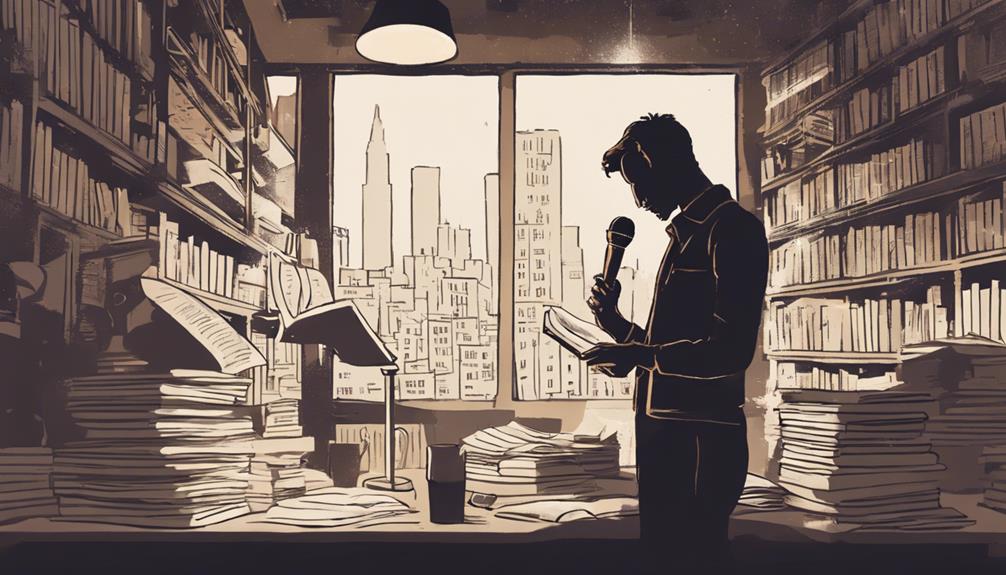You've written poetry that resonates with others, and now it's time to bring it to life on stage. But how do you transcend the page and create an unforgettable performance? It starts with crafting a compelling experience, finding your unique voice, and owning your vulnerabilities. You'll need to overcome stage fright anxiety, tap into the emotions that inspired your poetry, and connect with your audience on a deeper level. With practice, intention, and a willingness to be vulnerable, you'll draw your audience in and create a truly unforgettable experience. As you step into the spotlight, get ready to uncover the secrets to bringing your poetry to life.
Crafting a Compelling Performance
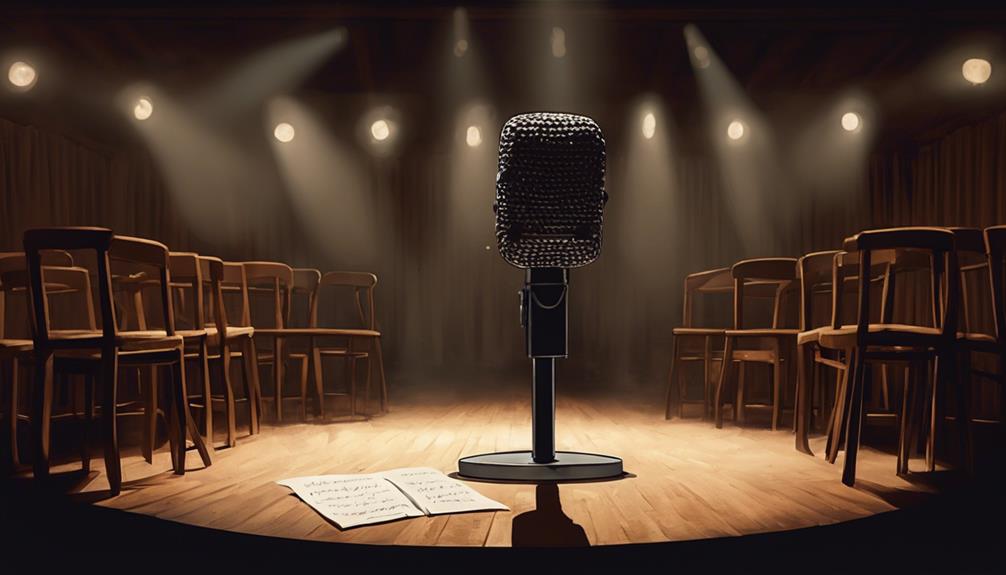
As you step into the spotlight, it's essential that you've crafted a compelling performance, one that not only showcases your poetry but also leaves a lasting impression on your audience. Your words should resonate deeply, evoking emotions and sparking connections. To achieve this, pay attention to your vocal inflections – the rise and fall of your tone, the pauses, and the emphasis on specific words. These subtleties can completely flip the script on your audience's engagement. Consider the performance nuances that make your poetry come alive. Do you use gestures to emphasize certain lines? Do you make eye contact to draw the audience in? How do you pace yourself to build tension or create a sense of intimacy? Every choice you make, from the way you stand to the way you enunciate, contributes to the overall impact of your performance. By being intentional with these details, you'll create a truly unforgettable experience for your audience.
Finding Your Unique Voice
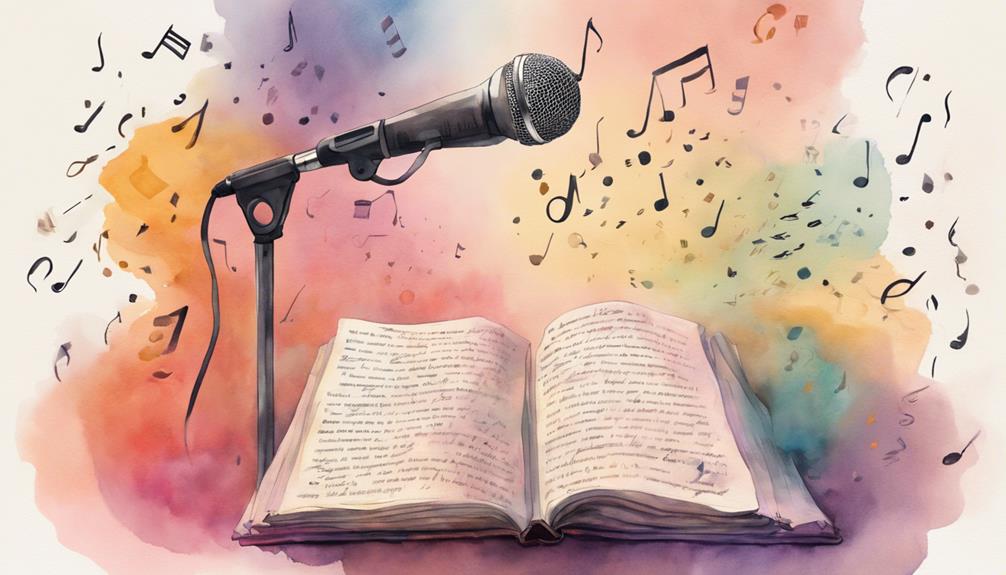
Explore deep within yourself to uncover the distinct tone, pace, and cadence that sets your performances apart, allowing you to stand out in a crowded literary landscape. Your unique voice is the sum of your experiences, emotions, and perspectives, so don't be afraid to tap into your vulnerabilities. Experiment with vocal techniques, exploring different pitches, volumes, and rhythms to find what resonates with your poetry. This experimentation will help you develop a distinct persona, a character that embodies your artistic vision.
As you dive deeper into your persona, consider what makes you, you. What are your passions, fears, and desires? How do these elements shape your poetry and performance style? Persona development is key to creating an engaging stage presence. It's the difference between reciting words and becoming the embodiment of your poetry. By embracing your authenticity, you'll attract audiences who resonate with your unique energy. So, take risks, be bold, and let your true voice shine through.
Overcoming Stage Fright Anxiety
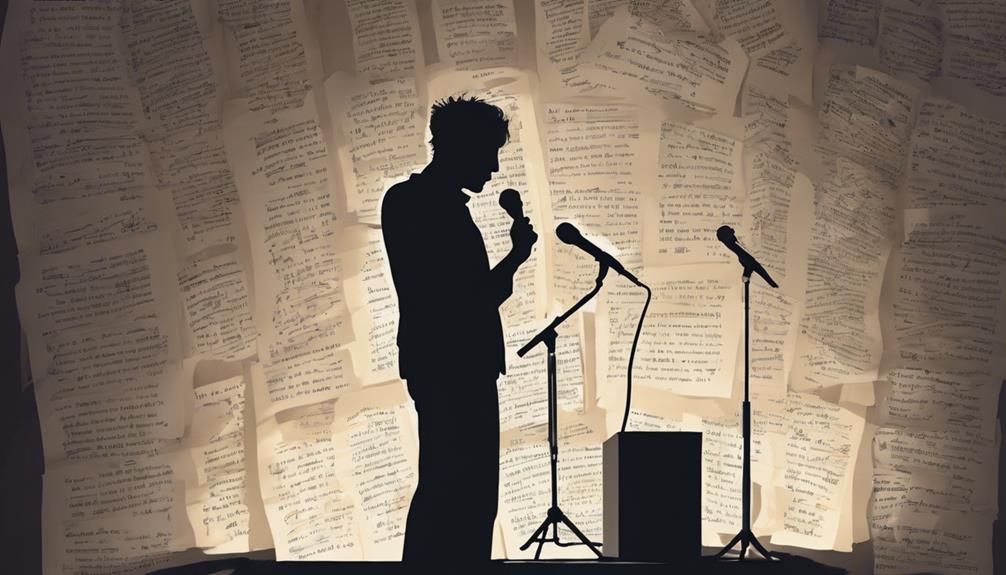
Your heart races, palms sweat, and mind goes blank – you're not alone in experiencing the overwhelming grip of stage fright anxiety that can turn even the most passionate poets into nervous wrecks. It's a challenging feeling, but know that you can overcome it. The key is to acknowledge your anxiety and face it head-on. When you start to feel those familiar pangs of fear, take a deep breath in through your nose and out through your mouth. Focus on the sensation of the air moving in and out of your body. This simple breathing exercise can calm your nervous system and clear your mind.
As you prepare to take the stage, remind yourself that you're well-rehearsed and capable. Positive self-talk can work wonders in boosting your confidence. Instead of dwelling on what could go wrong, focus on your strengths and the passion that drives your poetry. You've got this. You've worked hard to craft words that resonate with others, and it's time to share them with the world. Take a deep breath, stand tall, and let your words shine.
Reading With Emotional Authenticity

Now that you've overcome your stage fright anxiety, you're ready to connect with your audience on a deeper level by reading with emotional authenticity. This means tapping into the emotions that inspired your poetry in the first place, and allowing those feelings to resonate through your voice. Vocal resonance is key here – pay attention to your tone, pitch, and volume, using them to convey the emotional nuances of your words. As you read, allow yourself to be vulnerable, to access the emotional triggers that sparked your creativity in the first place. This might mean confronting painful memories or desires, but embracing those feelings is crucial if you want to move your audience. Remember, your poetry is a reflection of your humanity, and it's perfectly fine to be raw and honest with your emotions. By doing so, you'll create a sense of connection with your audience that transcends mere words on a page.
Building a Connection With Audience

As you stand before your audience, remember that building a connection with them is not about projecting a persona, but about being present in the moment, allowing your authenticity to shine through in every glance, gesture, and spoken word. This connection is rooted in audience empathy, where you acknowledge and share in their emotions, creating a sense of community and understanding. Your poetry becomes a reflection of their experiences, and they, in turn, reflect yours.
Cultural relevance plays a significant role in this connection. Your words, though personal, speak to the universal human experiences that transcend cultural boundaries. You're not just sharing your poetry; you're sharing your humanity. The audience is no longer just a sea of faces; they're individuals who resonate with your message. As you read, you're not just conveying emotions; you're evoking them. You're not just speaking words; you're sparking connections. Your authenticity breeds trust, and trust breeds a deeper connection. So, stand before your audience, be present, and let your words be the bridge that connects you.
Using Body Language Effectively

Before your audience, every gesture, every glance, and every subtle movement conveys a message, and harnessing this nonverbal power is important to amplify the emotional resonance of your poetry. Your body language can either enhance or detract from the impact of your words, so it's vital to use it intentionally.
Practice eye contact techniques to engage your audience and convey confidence. Hold the gaze of different audience members for a few seconds, then release. This creates a sense of connection and intimacy. Avoid darting your eyes around the room, as this can come across as nervous or insincere.
Facial expressions exercises can help you tap into the emotions behind your words. Practice mirroring the emotions you're expressing in your poetry. If you're reading a sad poem, allow yourself to feel the sadness and let it show on your face. This authenticity will translate to your audience, making your performance more relatable and impactful. By mastering your body language, you'll become a more engaging performer, and your poetry will resonate more deeply with your audience.
Practicing With Purpose and Intent
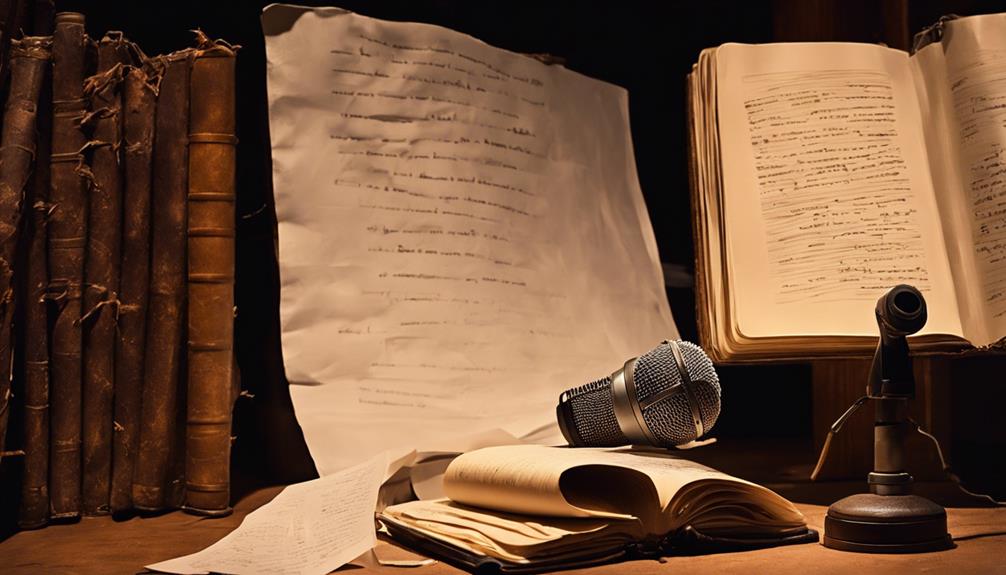
When you practice with purpose and intent, you're not just rehearsing your poetry, you're crafting an experience that will leave a lasting impression on your audience. You're not just reciting words on a page, you're conveying emotions, telling stories, and sharing pieces of yourself. To truly bring your poetry to life, you need to practice with intention. Start by rehearsing quietly, allowing yourself to connect with the words on a deeper level. Don't be afraid to experiment with tone, pace, and volume. Record yourself, and watch the playback. This will help you identify areas that need improvement and refine your delivery. Be honest with yourself – what works, what doesn't? Make adjustments, and record again. By practicing with purpose and intent, you'll transform your poetry readings into immersive experiences that resonate with your audience.
Creating a Memorable Opening
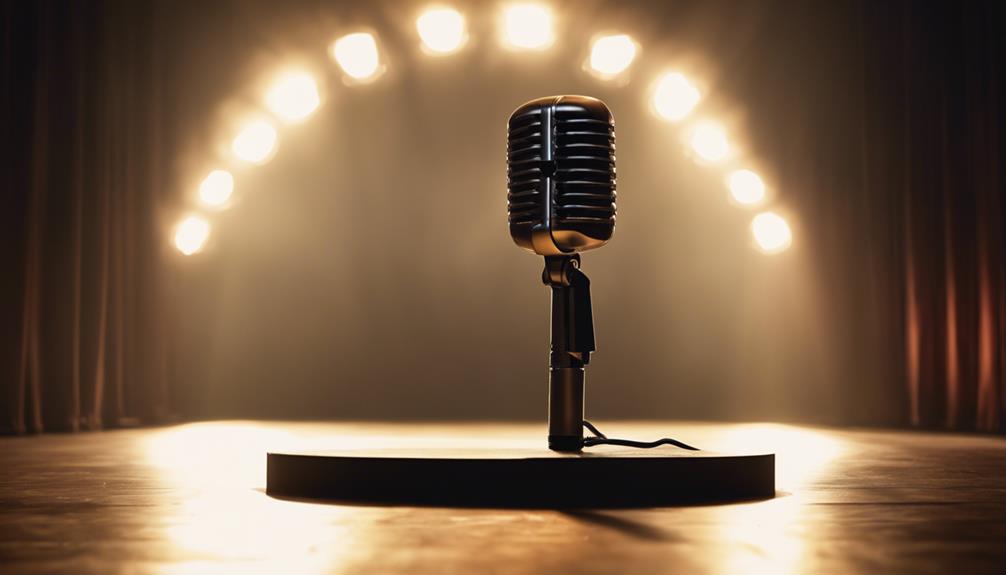
Your opening line is a promise to your audience, a whispered secret that sets the tone for the entire performance, so make it count. It's your Initial Hook, the thread that weaves the audience into your narrative. This is not a time for hesitation or apology; it's an opportunity to establish your voice, your tone, and your presence. Establishing Tone is pivotal in this moment, as it sets the emotional resonance for the rest of your performance. Don't waste it on small talk or awkward pauses. Use this moment to draw your audience in, to make them lean in, and to make them hungry for more. Your opening line should be a punch to the gut, a whispered secret, or a gentle caress – whatever it is, make it unforgettable. Remember, this is your chance to make a first impression, to create a sense of anticipation, and to draw the audience into your world. So, choose your words wisely, and make that opening line count.
Engaging With Your Audience
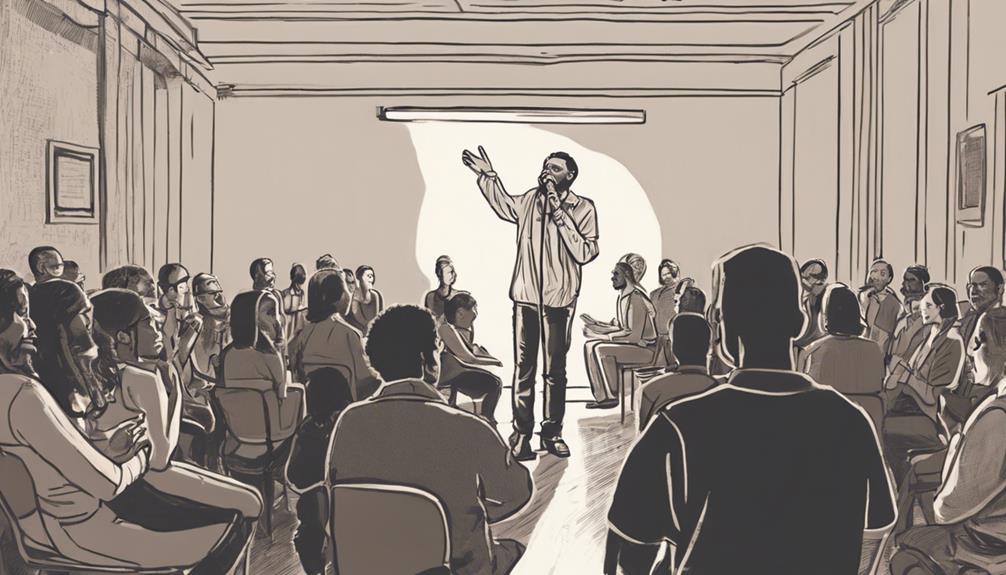
As you step into the spotlight, you're not just reciting words – you're inviting strangers to become intimate companions on a journey of emotions, thoughts, and experiences. To establish a connection with your audience, engaging with them on a deeper level is crucial. One effective way to do this is through deliberate eye contact strategies. Instead of scanning the room, focus on individual faces, holding their gaze for a few seconds before moving on to the next person. This creates a sense of intimacy and makes the audience feel seen and heard.
Another key technique is to encourage audience participation. This can be as simple as asking the audience to repeat a phrase or phrase, or to stand up and take a deep breath together. This breaks down the barrier between performer and audience, creating a sense of community and shared experience. Remember, it's not about being a performer, but about being a facilitator of emotions and connections. By doing so, you'll create a space where your words can truly come alive and resonate with your audience.
Frequently Asked Questions
How Do I Handle Hecklers or Disruptive Audience Members?
When life gives you lemons, make lemonade – and when you're faced with hecklers, make calm confidence your shield. Don't take the bait, but instead, acknowledge the disruption with a witty remark that shows you're unphased. This will help you regain control and refocus the audience's attention. Remember, it's about engaging with your audience, not getting into a verbal sparring match. Stay calm, stay confident, and your audience will stay with you.
Can I Use Copyrighted Music or Images in My Performance?
You're wondering if you can use copyrighted music or images in your performance. Honestly, it's a legal gray area. Music licensing can be a nightmare, and you don't want to get sued. But, there's hope. Look for Creative Commons licensed work or royalty-free options. It's not ideal, but it's better than risking a lawsuit. Be cautious, and always give credit where credit is due. Your art is worth the extra effort to get it right.
What if I Forget My Lines or Stumble Over Words?
You're standing on stage, mic in hand, and suddenly your mind goes blank. You forget your lines, stumble over words, and your heart's racing like crazy. It's stage fright, and it's real. But here's the thing: it's not about being perfect, it's about being prepared. Mental prep is key. Practice, practice, practice until the words are etched in your brain. Visualize yourself crushing it on stage. Take deep breaths, and remember, it's okay to make mistakes – it's all part of the show.
How Long Should My Poetry Reading Performance Be?
Time is a ticking bomb, and you're the one holding the detonator. When it comes to your poetry reading performance, length matters. You want to keep your audience engaged, not checking their watches. Aim for 10-15 minutes, max. Any longer and you'll lose them. Think of it like a sparkler – it's all about the fleeting magic. Manage your time wisely, and you'll leave them wanting more.
Should I Offer Merchandise or Sell My Work After the Reading?
You're wondering if you should sell your work or offer merchandise after the reading. Honestly, it's a great way to boost brand visibility and rake in some financial supplements. Think about it, people just witnessed your passion and talent on stage – they're primed to take a piece of that magic home. Offer them a tangible connection to your art, and you'll not only make some extra cash, but also create a loyal following.
